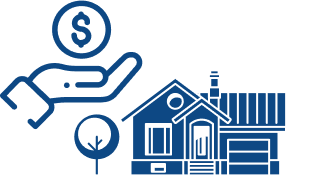You Can Still Get Federal Aid if You Are Struggling with Making Rent
June 13th, 2022 / Author: Cesar GomezRenters are dealing with a lot of pressure as rents get higher, due to the rise in demand. The start of the pandemic brought a lot of distress to the renting market and the government recognized this issue. That is why they created an Emergency Rental Assistance and allocated $46.5 billion in total, in December 2020 and March 2021.
The fund approved in December 2020 had $25 billion dollars and is now left with $7.2 billion. The ERA2 from March 2021 had just over $21.5 billion and still has $14.8 billion. This means that there is probably still time to apply for assistance.
However, some states such as New York, Texas, and New Jersey, have been running out of funds. There are still some means the local and state governments created to distribute funds to renters in need. For example, Dallas has the city initiative that helps renters and landlords alike.
Nevertheless, the main source of assistance is still ERA with its 512 programs that provide renters and landlords with help via states, tribes, or local areas. Most of those programs are allowing self-attestation for Covid hardships, incomes, and housing instability.
Additionally, it covers between 12 to 18 months, depending on the area, and some programs even include financial help with relocation expenses, hotel stays, internet costs, utility and electricity bills.
Who Qualifies and for How Much?
As stated before, states, tribes, and local government programs have certain autonomy over the amount of money they give out and the eligibility standards. The amount of money is usually correlated with the median rent of the area, and the eligibility is granted to those who can prove financial hardships caused by the pandemic.
The funds are usually transferred directly to the landlord’s account, but if the landlord will not partake, tenants can notify their provider and settle it differently. Landlords can also apply directly instead of their tenants.
To qualify for the assistance, at least one member of the household must qualify for unemployment benefits or to attest in writing that the pandemic made them lose a significant amount of money.
To add to that, an applicant needs to show proof that they might become homeless and that they do not earn more than 80% of the median area salary. Some programs even prioritize those who earn less than 50% of the median area salary. Most programs allow for one applicant to apply multiple times, but only if the assistance covers different periods of time.
Tenants Facing Eviction
In the first week of April, there have been more than 7,000 evictions nationwide, which is still a small number compared to those before the pandemic. Still, evictions are on the rise and not as an effect of the pandemic. The global uncertainty and rising inflation are eating up the budget of every household, and many are going into default.
For those renters who are facing eviction, there are legal professionals who offer free help in their communities. States like Indiana, Connecticut, Washington, and Maryland all gave renters the right to free representation.
The ERA application is worth the paperwork, because just applying for ERA assistance can pause eviction proceedings, and if a renter gets the funds the eviction can even get stopped.
To end the article on an optimistic note, the new President’s Budget Proposal included $8.8 billion for a long-term solution for affordable housing and $15 billion for direct assistance. If this goes according to plan, the pressure will be lifted off of both renters and landlords.
SELL
YOUR HOUSE
If you want to sell fast and are worried about how long the traditional process takes, and the commission and fees involved, consider working with SleeveUp Homes.





 view all blogs by this author
view all blogs by this author Zachariah Peterson (69 blogs)
Zachariah Peterson (69 blogs)